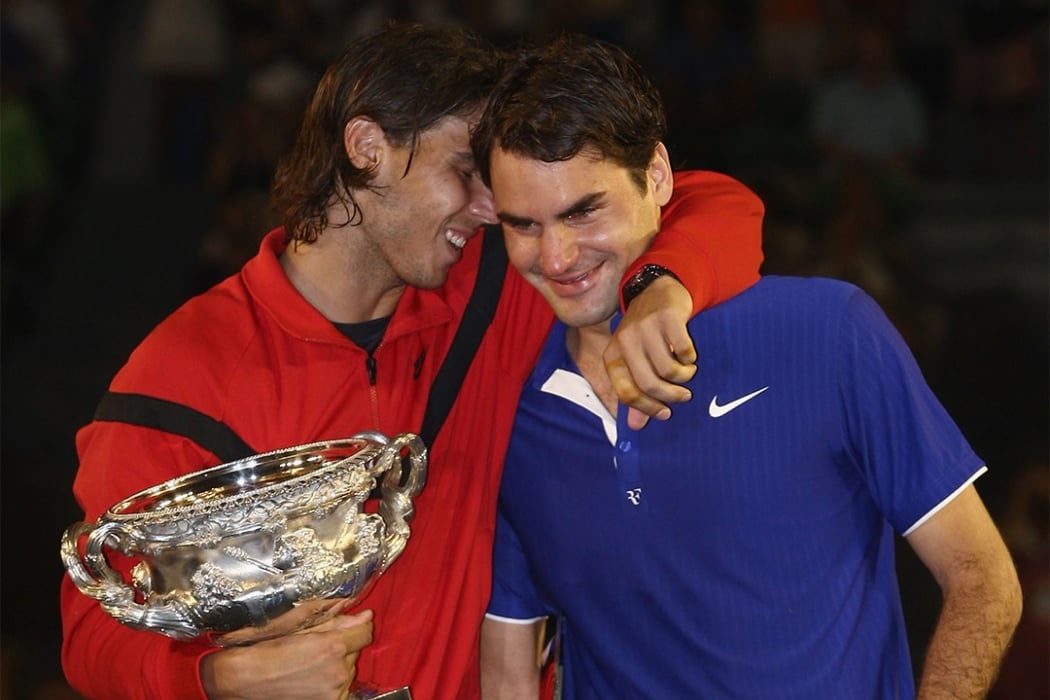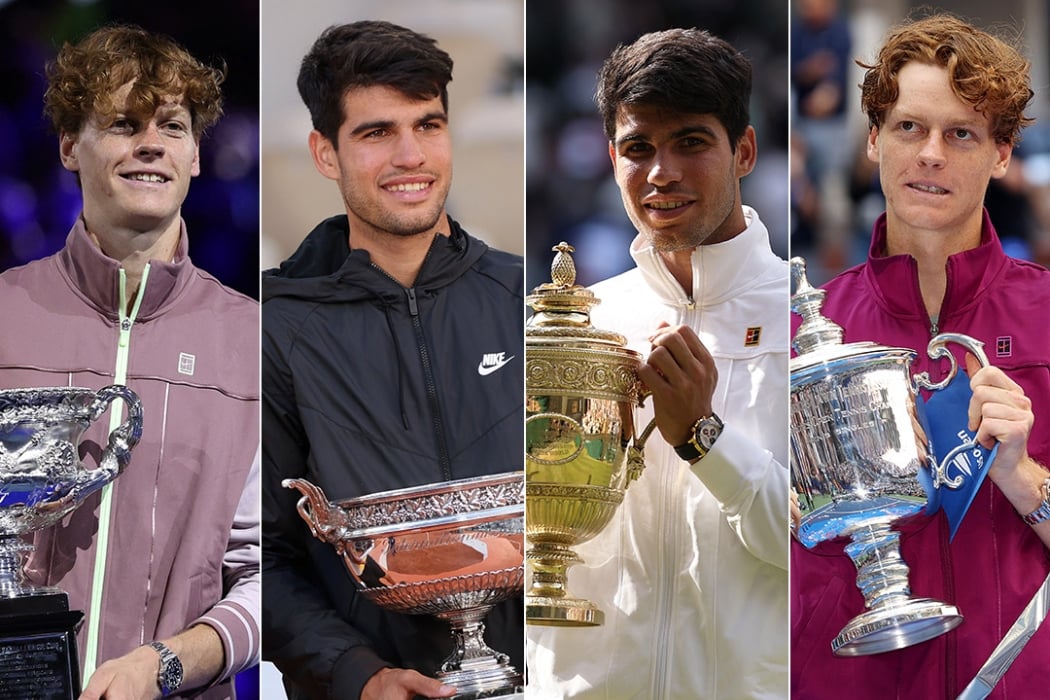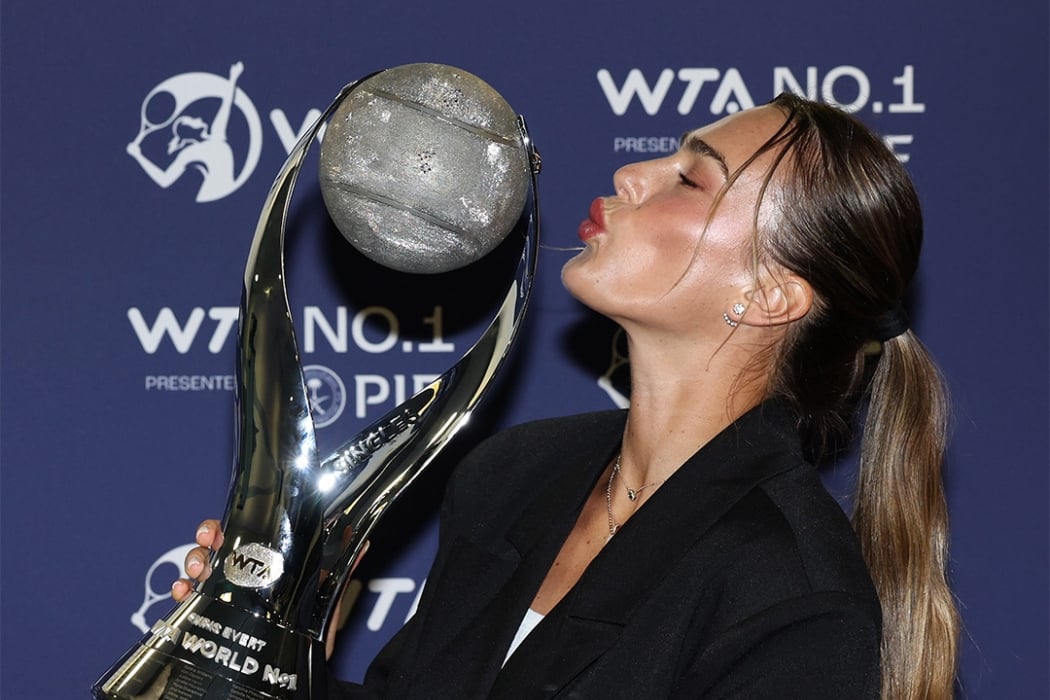When Nick Kyrgios joined this week’s episode of The Sit-Down podcast, his passion for tennis became clear.
A series of injuries have sidelined the Australian star for the better part of two years, a lengthy absence he’s excited to end when he returns at the Brisbane International in less than six weeks.
Then it's his first appearance at the Australian Open since winning the men's doubles title in 2022.
LISTEN: Nick Kyrgios on The Sit-Down
In his time away, Kyrgios emerged as an engaging, insightful tennis analyst – a role that has helped him understand more acutely the power of media coverage and the fan experience in growing the sport.
During the podcast episode Kyrgios was asked what he would change about tennis to enhance its appeal.
"I've got heaps,” he admitted as he started sharing his thoughts.
Three sets at Slams – until the quarters
Kyrgios believes first-week Grand Slam action could benefit from a shot in the arm by streamlining the format.
“I think best-of-three (sets) up until the quarterfinals, and from then on it's best-of-five. That's what I would immediately change at a Grand Slam,” he said.
"If you made it best-of-three (sets) up until the quarterfinals, you'd see some guys break through to the quarterfinals, but then obviously the better players would end up winning best-of-five.
"And the first week would be more exciting... How many times have we seen one of the best players in the draw lose the first set and you're just like, he's gonna come back and win it anyway?
"When Li Tu won a set against Alcaraz early on (at the US Open). Now it's one set all, and then it's one set (to go) – that could change Li's entire career. He beats Alcaraz on the Centre Court at the US Open – you become a name. I think that would be a cool thing to change.”
Kyrgios also sees other benefits to this approach.
"I think it would save us a lot of effort on scheduling; (in) the first week scheduling gets out of control,” he said.
“With the men's side playing best-of-five and sometimes the women's matches go long best-of-three, I mean, men's matches aren't finishing until like 2 or 3am and it's just not sustainable, I don't think.”
More mixed doubles
At combined ATP and WTA 1000 tournaments, Kyrgios wants to see men’s and women’s doubles replaced with mixed doubles.
"What other sport can you get your favourite female athlete and your favourite male athlete competing on the same side of the net, for good prize money? It's not possible. Like, you don't see it in any other sport really,” he said.
"So at Masters events, instead of men's doubles and women's doubles, it should just be mixed.”
Would he play it? "One hundred per cent I would. Definitely,” he replied. “There's plenty of good players I'd love to play with, past and present.
“I've had the honour of playing with Serena and Venus (Williams). I would have loved to have played with Ash Barty at some stage. I think she was by far one of the most talented female players to ever play the game. I think we would have done some damage on the court, for sure.”
Mic up the players
Kyrgios believes hearing what players are saying more clearly on court in the heat of battle would add to the fan experience.
"I would have players mic'ed up, as well. I think if you watch the NBA, the uniform or kit that they wear, they professionally put like a mic inside the shirt around the collar, so you can't feel it,” he said.
“Not doing that (in tennis) is being absurd for me – why would you not have like Novak or Alcaraz mic'ed up to hear what they're saying?
"Even before the points, you see some of these amazing athletes – I do it myself sometimes – before a big point, they're talking to themselves.
“The content that you could create from that already would have tennis fans glued to their phone.”
Better commentary
When asked about his experience of tennis broadcasting, Kyrgios revealed he was surprised at how mean some of the commentators were.
"I'm not a very critical commentator. I don't like when commentators beat down (on players) or are too critical, because it's not easy out there, in today's day and age, the game's so physical,” he said.
"Tennis commentating right now needs a bit of a shake-up, I think. I guess when you've really played, and you understand the Futures and the Challengers, like how many players there are on a global scale, (you understand) how hard it is to actually make it into the top 128 players to make a Grand Slam.
"Our job as commentators is to study these players and know their journey, and hopefully get their name out there. We can't just continually promote the same players over and over again. There are some good players out there that no-one knows.
"I take that into account when I'm commentating – I like to really get it out there."
KYRGIOS: "I want to call John Cain Arena the Kyrgios Court"
Kyrgios feels that not having had his own coach for several years has made him more tactically aware, and as a result, a better analyst.
“I study film and I watch other players and I know every other player's strength and weakness back-to-front,” he said.
"I just love having fun with it; I feel like I've only watched and played tennis for 20 years. Like, it's really easy to get in there (to the commentary booth) and just be funny and drop some knowledge on some fans if someone's doing some specific thing.
“I really enjoy it.”
Understanding the power of media
Not only does he find it fun, but Kyrgios recognises how commentary can shape a viewer’s experience, and convert more tennis novices and casual observers into hardcore tennis fans.
This informs his approach to commentary, which he also hopes connects younger generations with the game.
"I think commentating and this (media) side of things in the tennis world is so underrated,” he said.
“When someone turns on the TV, they might not know – we're not talking about the fans that have followed the sport for 20 years – we're talking about new fans and bringing them to the game. They're not going to know anything about these players.
"So the commentating needs to be up-to-date, I guess, in a way. It needs to be, like, kind of how the generation is now. They can't concentrate for more than a couple of minutes, so it needs to be loud, it needs to be energetic for a 20-second, 30-second (bit) and that might grab a new fan.
"I'm just trying to grow the sport as much as I can, I guess, on both sides of the spectrum.”
Listen to the full episode of The Sit-Down, a weekly podcast released each Monday featuring an in-depth interview with a notable tennis identity. Subscribe via The AO Show in your favourite podcast player.



